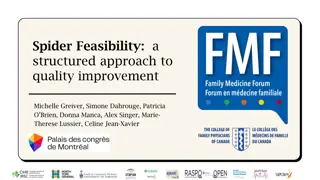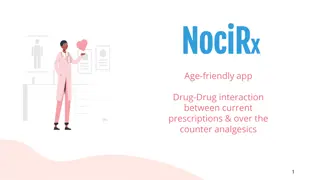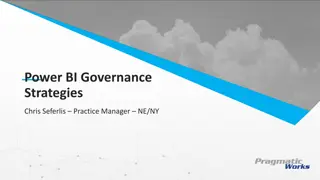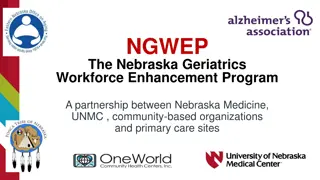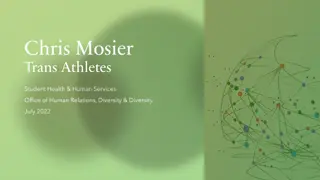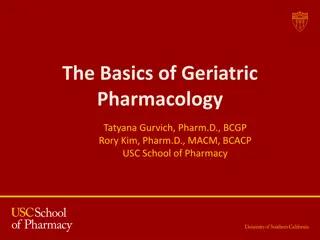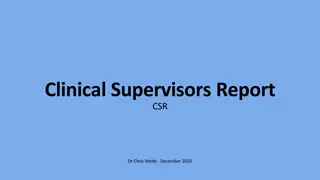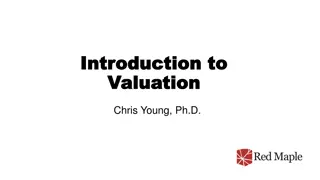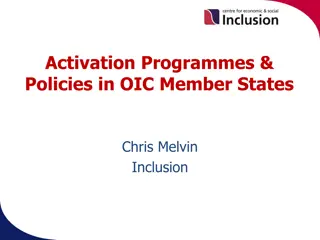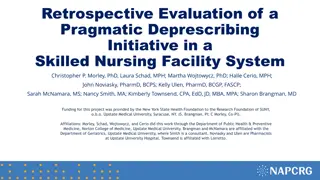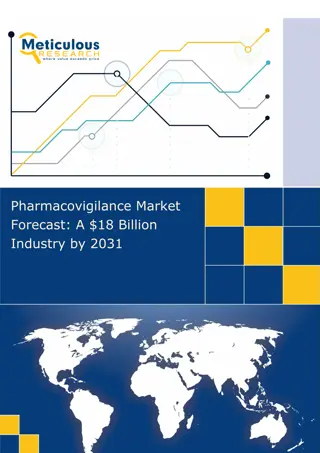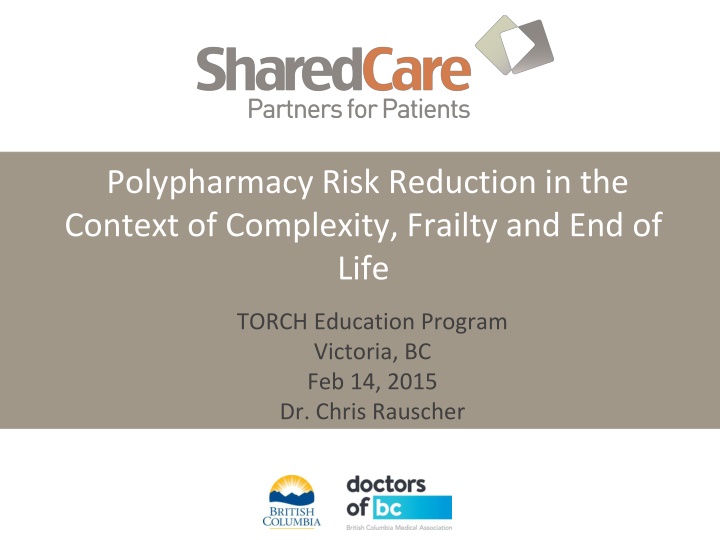
Polypharmacy Risk Reduction in the Context of Complexity, Frailty, and End of Life
Explore the essentials of Polypharmacy Risk Reduction (PRR) and its significance in addressing resident complexity, frailty, and end-of-life considerations. Understand the implications of polypharmacy, the lack of a specific medication threshold, and the increased risk of adverse drug events. Gain insights into identifying appropriate medication regimens while considering clinical needs and patient perspectives.
Download Presentation

Please find below an Image/Link to download the presentation.
The content on the website is provided AS IS for your information and personal use only. It may not be sold, licensed, or shared on other websites without obtaining consent from the author. If you encounter any issues during the download, it is possible that the publisher has removed the file from their server.
You are allowed to download the files provided on this website for personal or commercial use, subject to the condition that they are used lawfully. All files are the property of their respective owners.
The content on the website is provided AS IS for your information and personal use only. It may not be sold, licensed, or shared on other websites without obtaining consent from the author.
E N D
Presentation Transcript
Polypharmacy Risk Reduction in the Context of Complexity, Frailty and End of Life TORCH Education Program Victoria, BC Feb 14, 2015 Dr. Chris Rauscher
Objectives/Focus Understand the basics of Polypharmacy Risk Reduction (PRR)-What, Why Understand moving from a focus on decisions about medications in general to making clinical decisions in the context of resident complexity, frailty and end of life as an intro to today s session Disclaimer- no conflicts of interest, although I am getting paid to be here as the Clinical Lead for the Shared Care PPh initiative 3
What exactly is polypharmacy? If not defined by number of medications, then: Clinically indicated: proven benefit or benefit>harm (Clinically) Warranted- Justification for an action or a belief Bring in patient/resident/family perspective Polypharmacy Risk Reduction More than looking at individual drugs or drug classes-Balance More than stopping meds Starting meds Reducing dose What is appropriate for this resident? 5
There is No Magic Number To Define Polypharmacy But Adverse Events Increase as Meds Increase Likelihood of an ADE 2 pills.........................................13% 5 pills.........................................58% 7 or more ..82% 7
Adverse Drug Events Events : Falls, Delirium Side effects (Versus Drug Reactions ) Interactions Drug-Drug Drug-Disease Drug-Nutrition
Adverse Drug Events (ADE s) Acute care Admissions Elderly - 16% of all admissions (27-40% preventable) Younger- 4% of admissions (20% preventable) J Am Geriatr Soc. 2002 Dec;50(12):1962-8. BMJ 2004 Jul 3;329(7456):15-9 ; JAMA 1998 Apr 15;279(15):1200-5. ; Pharm World Sci. 2002 Apr;24(2):46- 54. Residential Care 10% of LTC population/month have ADE (Gurwitz:Am J Med. 2005 Mar;118(3):251-8.) 40% preventable
Common Side Effects For Meds Fatigue, weakness, muscle aches Anorexia, nausea, bloating, cramps, constipation, diarrhea Dizziness, postural instability, orthostatic hypotension , hypoglycemia Confusion, sedation, headaches, insomnia, restlessness, agitation, delirium Decreased general health Increased risk of falls and hip fracture Decreased cognitive function 10
My belief: Accumulation of minor side effects = people could feel crappy! Affecting their function and quality of life! 11
Polypharmacy is a stand-alone risk factor for morbidity and mortality Even when we control for other comorbidities and specific drug effects.
Hospitalisation-Associated Disability Hospitalization is a sentinel event that often precipitates disability. This results in the subsequent inability to live independently and complete basic activities of daily living (ADLs). This hospitalization-associated disability occurs in approximately one-third of patients older than 70 years of age and may be triggered even when the illness that necessitated the hospitalization is successfully treated. 13
The Challenge Average number of regular medications per LTC resident in BC is around 9 (range 0-55!). Anecdotally, 12-14 not uncommon. With careful practice, this number can be 5-6 RAI-MDS counts number of residents on >9 regular meds, and this is often above 50% What is your site s RAI-MDS data?
What are the Causal Factors Leading to Polypharmacy? 15
What are the causal factors leading to Polypharmacy? Wrong Context: Single Disease-Shift to Complex, Multimorbidity, Frailty, End of Life Clinical Practice Guidelines (Chronic Disease Management) Multiple prescribers Treating surrogate markers Clinical uncertainty ADE or new symptom?-Drug cascade Uncertain treatment goals
What are the causal factors leading to Polypharmacy? Clinical and system complexity Difficulty getting the history Inadequate communication Collaborative and Shared Care challenges Challenges of involving resident/family 17
What are the barriers to effective Medication Decision-Making?
What are the Barriers to Effective Medication Decision-Making? Consensus on clinical/pharmacological knowledge, especially with complexity of resident population Perceived Medico-legal Risks Process and communication issues Absentee MRPs Other care priorities, time, remuneration. Family and Resident Involvement
Supportive Initiatives: Community TORCH GPSC Res Care Professional Academic Detailing in GP offices - Medication knowledge Physicians Data Collaborative Polypharmacy RR - Medication review CIHI Data Project Tools-ADAPT, Med Stopper. Patient Residential Care Hospital MedRec - Best possible medication history MedRec - Best possible medication history 48/6 - Assess 6 areas w/in 48 hr CLeAR- Appropriate antipsychotic use Polypharmacy RR - Medication Transition in Care Polypharmacy RR - Medication review review
What Will Help You To Make Effective Decisions About Medications?
What about in Residential Care ? Garfinkel, Zur-Gil, Ben-Israel; IMAJ (Vol 9), June 2007 190 patients in 6 geriatric nursing departments on 7.09 regular meds/pt. 119 pts; after careful review, 2.8 regular meds/pt stopped (4.3 meds/pt) 71 pts in control group on same wards with same doctors, with meds unchanged, studied for one year.
Results No significant adverse events 1 in 10 drugs eventually needed to be restarted One year mortality rate was 45% in controls and 21% in the study group (P<0.001) Annual referral rate to acute care was 30% in controls and 11.8% in the study group (P<0.002)
What Approaches/Tools Beers Criteria; STOPP/START: Mix of specific drug/drug classes of concern plus specific drug interactions Too many variables to remember/work with unless have an electronic system Our approach- Specific drug/drug classes of concern 26
27 Drug Decision Algorithm
Priority De- Prescribing Drug List: Lower Doses, Trial Discontinuation
Priority De- Prescribing Drug List: Lower Doses, Trial Discontinuation 29
Supports For Drug Review Decisions Guide individualized consideration of patient-at-hand Drug Advisory Sheets [drafts] + One-page: You Decide ** PPIs ANTIPSYCHOTICS STATINS HYPNOTICS ANTIHYPERTENSIVES ANTIDEPRESSANTS BISPHOSPHONATES VITAMIN D & CALCIUM SUPPLEMENTS Drug Brief: Calcium Understanding of clinical condition Condition Advisory Sheets STROKE PREVENTION IN THE ELDERLY (DRAFT) DEPRESSION IN THE ELDERLY (DRAFT) TREATING DIABETES IN THE FRAIL ELDERLY (FORTHCOMING) Materials are aligned with GPAC and OPUS materials and will be reviewed by a Clinical Advisory Team
What Statistical Tools Will Help With With Clinical Decision-Making?
Stats Distinguish by drugs for symptom control versus drugs for preventing a future event Event rates- The proportion of patients in a group in whom the event is observed NOT Relative Risk Reduction- Used to compare the risk of an event happening in two different groups of people Absolute Risk Reduction- Risk of developing an event over a time period Number Needed To Treat (NNT)/Number Needed To Harm (NNH) 32
Stats Time to Benefit (TTB)/Time to Harm (TTH) Time to Lose Benefit (TLB)/Time to Reduce Harm (TRH) Statistical benefit vs clinical benefit (harm) 33
Number Needed To Treat-NNT www.thennt.com Estimating the number of patients that need to be treated in order to have an impact on one person. The concept is statistical, but intuitive, for we know that not everyone is helped by a medicine or intervention some benefit, some are harmed, and some are unaffected. The NNT tells us how many of each. Addressing Polypharmacy in the Elderly
Deaths reduced 10% to 8%= 2% Absolute Risk Reduction RRT (relative risk reduction)= 2%/10%=20% NNT= 1/ARR=1/2=100/2=50=Treat 50, avoid 1 death NNH-2% Additional Bleeds, Treat 50, 1 bleeds Addressing Polypharmacy in the Elderly
Statins- Before You Decide Discontinue if for primary prevention; if for secondary prevention, apply risk-benefit analysis and continue treatment only for demonstrated significant vascular risk: past MI/stroke 36
Statins- You Decide Harms- Major Uncommon: Asymptomatic liver enzyme elevations by 0.4%; Rhabdomyalysis: ? Risk of type2 diabetes by 0.5%, in pre-disposed , < CV risk in many people Memory loss/ confusion -? Harms- Minor side effects Muscle-related symptoms-10-50%?, residents cumulative causes aches and pains Nausea, gas, diarrhea or constipation 38
Statins- You Decide Review the use of a statin in the residential care environment in the context of life expectancy and goals of care, as well as from the perspective of the potential aggregation of adverse effects from multiple meds that may affect mobility/function and quality of life. Is the benefit greater than the potential harm? 39
PPIs- You Decide Symptomatic control- Stats not as helpful: PPIs somewhat more effective than H2RA Many patients are on long term PPIs without clear ongoing indication/benefit, and the more drugs, the more potential for side effects/adverse events and time taken to administer: For GERD- Use 4-8 weeks then trial discontinuation May have been started for stress ulcers in hospital but can stop when discharged, unless major ongoing bleeding risk 40
Moving From Focus on Single Drugs/Drug Classes to Whole Drug Profile In Complex Residents
Fraser Health Guide To Person-Centered Medication Decisions
Starts with your own goals (beliefs, values)- for meds: only those warranted , quality of life (active symptoms), function Management- Not always or only with meds: non- pharmacologic approaches- pain, constipation, mild depression, BPSD etc. 43
Utilize Comprehensive Geriatric Assessment and (Repeatedly) CommunicatePrognosis with patients families and community workers 44
Estimate Remaining Lifespan- Life-limiting conditions Interested in prognosis, trajectory of decline to set context for goals of care and decision-making In most will be dementia as an end of life condition (Dr. Rosenberg: Palliation for Advanced Dementia In some may (also) be chronic-exacerbating conditions- CHF, COPD, neurologic-Parkinson s, MS etc. Surprise question - would you be surprised if this person is still alive in 6 months : Frailty, triggers- reduced nutritional intake, febrile illness, pneumonia, repeat exacerbations , progressive CRF, low BP, low Na 45
Use of Medications of Questionable Benefit in Advanced Dementia Tjia et al JAMA Int. Medicine Sep. 8th 2014 N= 5406 nursing home residents with advanced dementia (MMSE-5) 54% were on medications with questionable benefit 22.4% statin drugs Lower likelihood Not having an Eating problem DNR Enrollment in Hospice 35% of all medication expenditures were for medications of questionable benefit Cost $553/$816/90 days
Determine what impacts quality of life and function This will usually be the main focus of the care plan May be hidden and require Tx (not always or only with drugs)- pain, constipation, depression BPSD with Dementia (http://www.bcbpsd.ca) Current Potential Exacerbating conditions, neurologic-Parkinson s, etc. Broader- Emotional, social, activities 47
Goals of Care With that background/context, apply a goals of care approach: Drs. Christine Jones and Ted Rosenberg Document conversation in the following categories: Function improvement/maintenance Symptom reduction Place of care Caregiver burden Transfer to acute care Wishes for survival (long as possible, or not, CPR, Antibiotics, etc) 48
Goals of Care Get direction on medication use from the goals of care discussion Survival Qof L and Function and Symptom control Transfer to acute care- Tx in facility, coming back on more meds Trade-offs- benefit versus harm-particularly important for medications discussions/decisions 49
Medication Decision-Making in Complex Health Situations No direction from the literature as multi-morbidity is a new area of study-SO Let s discuss with the cases and analyze how we are making those decisions Starts with medication reconciliation identifying indication for each medication For med review-Can go medication by medication but more likely to be on balance thinking within the context of lifespan/prognosis/goals of care Be aware of changing drug tolerability with aging/frailty 50

